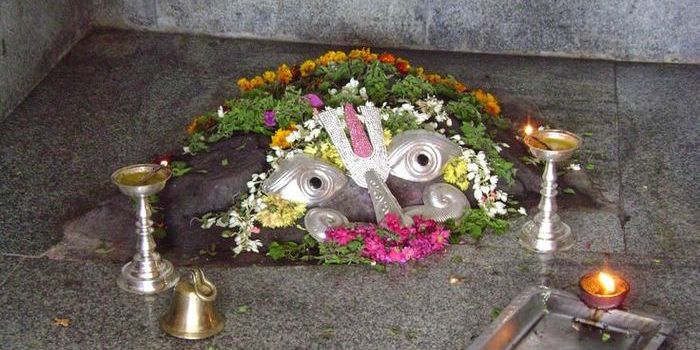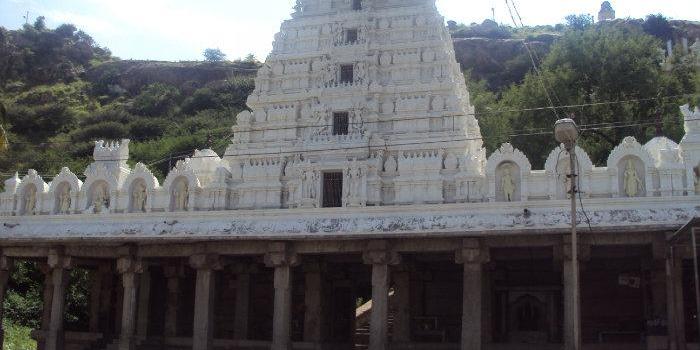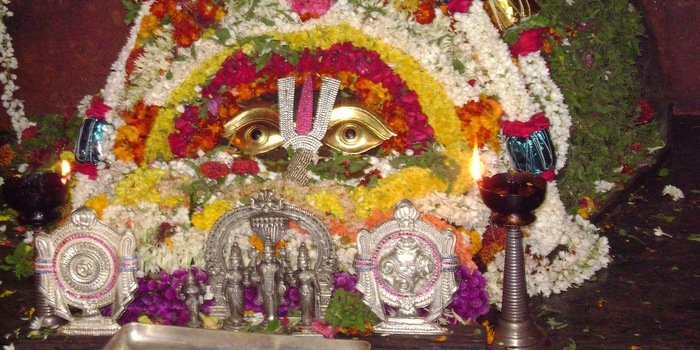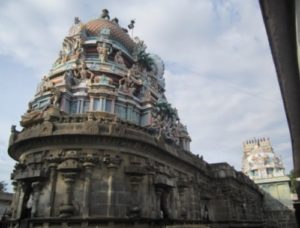The 3 Main Temples Where Lord Vishnu is Worshipped as Kurma Avatar !!
We all know about the 9 incarnations of Lord Vishnu and the stories associated with them. Have you ever thought of the temples associated with them? Yes, in this blog, we are going to know about some of the unknown and rare temples that are related to one of the incarnations of Lord Vishnu – Kurma Avatar (2nd incarnation of Lord Vishnu in the Form of Tortoise).
Like any other avatars of Vishnu, Kurma Avatar was also taken at a time of crisis to restore the cosmic equilibrium. Once, the gods and demons churned the ocean of Milk (Parkadal) in order to get the Nectar of Immortality (Amruth). To churn the ocean of Milk, they used the Mount Mandara as the churning staff and the serpent Vasuki as the churning rope. While the Samudra Manthan (churning) was happening, the mount Mandhara (which was used as a churning staff) got stuck and it couldn’t move. Hence, Lord Vishnu transfigured as a tortoise and went into the ocean to give support to Mount Mandara.
Though we have come across numerous temples of Lord Vishnu depicting His various incarnations or avatars, Kurma Avatar of Lord Vishnu is a unique one and there are a very few temples in the world, where Lord Vishnu is worshipped in the form of the tortoise.
These are the only 3 main temples in India where Lord Vishnu is worshipped in the form of Kurma Avatar. They are,
- Sri Kurmam Temple, Srikakulam, Andra Pradesh
- Sri Gavi Ranganatha Swamy Temple, Chitradurga, Karnataka
- Sri Kurma Varadharaja Swamy Temple, Chittor, Andra Pradesh
Sri Kurmam Temple – Srikakulam
Sri Kurmam or Kurmanadha Temple is in Srikakulam area situated on the shores of Bay of Bengal and this is one of the few temples of Lord Vishnu in the form of Kurma Avatar (ie.) in the form of Tortoise. It is the one and only Suyambu or Self-Manifested temple in the world where Lord Vishnu is adored in the form of Kurma.
As per the Sthala Purana, it is said that during the Krutha Yuga, a Pious King Named Swetha Maharaj did a fierce penance for many years. Being pleased by his penance, Lord Vishnu appeared/ manifested here in the form of Kurma Avatar. It is also believed that Lord Brahmma, the creator, performed the holy rituals by Himself and sanctified or purified the Holy Shrine of Kurma with Gopaala Yantra. It is said that the Holy Lake named “Swetha Pushkarini” that is found in front of the temple is formed by the Sudarshana Chakra. Goddess Mahalakshmi originated from this in the form of Varada Mudra posture – Seated on the Garuda Vaahana and she is known by the name Sri Kurmai Nayaki.
The main idol of Lord Kurmam is a big Saligrama and is known as “Sampradayam”. The image is not a sculpture that is crafted by man, but it is the fossil of an actual (large-size) turtle. The temple tower is called the Padmavimana. Unlike the other Vishnu Temples, the main deity is facing West and so there are 2 Dwajasthambas, one facing East and the other facing West. This temple is also known for its marvellous sculptors and wealthy art designs.
There are almost 210 pillars in the Sri Kurmam temple and each of the pillars has its own identity. Moreover, this temple is believed to be the Moksha Sthala since the bath in Swetha Pushkarni would wash away all the sins. Apart from Kashmir, this temple also has a special shrine for Vaishno Devi. Other deities found in this temple are Kala Bhairava, Venugopala Swamy, Vyasa Maharshi, Sri Maha Lakshmi and Durga Devi.
Sri Gavi Ranganatha Swamy Temple – Chitradurga
Gavi Ranganathaswamy Temple is the second temple where Lord Vishnu manifests Himself as Kurma Avatara. The temple is located at a place called Gavi Rangapura, located some 28kms from Hosadurga Town in Chitradurga Dist., Karnataka. The temple is actually a Cave Temple and so the Lord is known by the name “Gavi Ranganathaswamy” (In Kannada Gavi means Cave )!
In the main Sanctum, the Lord graces His devotees in the form of Kurma Avatar (Tortoise). The temple is built on the top of the hill and the Garbagraha is in the form of a cave. The beautiful idol of Lord Vishnu in the form of a giant tortoise is found on the floor, at the center of the cave. Silver eyes have been fixed on the eye sockets of the Tortoise. Lord Vishnu’s signature Naama (Thirunaamam) has been placed on the forehead, and a silver conch and chakra are kept on the left and the right side respectively.
This temple can either be reached by roadways or by granite steps that go up the hills till the main temple. At the lower level of the temple complex, one could see a separate shrine dedicated to Goddess Udhbava Lakshmi (the consort of Lord Vishnu). We could also see separate shrines for Lord Anjaneya, Lord Ganesha, and Lord Anantha Padmanabha Swamy at different levels on the same hill. Unlike other Vishnu temples, the idol is always covered with garlands of marigold, jasmine, chrysanthemum and tulsi leaves. After the Arti/Pooja is performed, the curd is given as theertha Prasadam to the devotees.
Sri Kurma Varadharaja Swamy Temple – Chittoor
The next temple that has Lord Vishnu in the form of Kurma Avatar is Sri Kurma Varadharaja Swamy Temple, Chittoor. The temple is located on the Palamaner Road, Chittoor Dist., Andra Pradesh. As the name of the temple suggests, Lord Vishnu graces His devotees in the form of a Tortoise with His consort Goddess Bhoodevi. The temple is located on the banks of the sacred river Koudinya.
As per the legends, during the period of 1790’s the Rayalaseema region was under the rule of Muhammads. Due to religious differences among the people, most of the prominent temples were demolished by the Muslim rulers. By knowing the situation, the former Kurmai villagers demolished the Outer Prahara (fencing around the temple) themselves and then covered the whole temple (which is nearly 250 sq km) with sand, in order to save the Temple from desecration by the gang of Muhammad rulers. It is believed that Sri Varadaraja Swamy has left the temple to Kancheepuram (Kanchi) and while leaving this place for Kanchipuram, He made His footprints on the stone called Kodhevarabanda.
Nearly 150 years back, one day a Kannada person belonging to the Kurmai village visited that place and he was examining the sand hills. At that time, he accidentally noticed the gopuram of Kurma Varadaraja Swamy temple. With the help of Kurmai villagers, he cleared all the sand and started rebuilding the temple. The main function that was celebrated in this temple is the Rathotsavam where the Lord Varadaraja Swamy along with His consort Goddess Boodhevi is taken around the streets of the village in the Ratham (Chariot).









